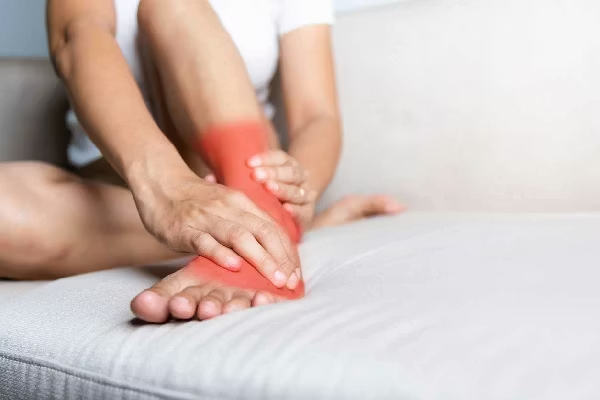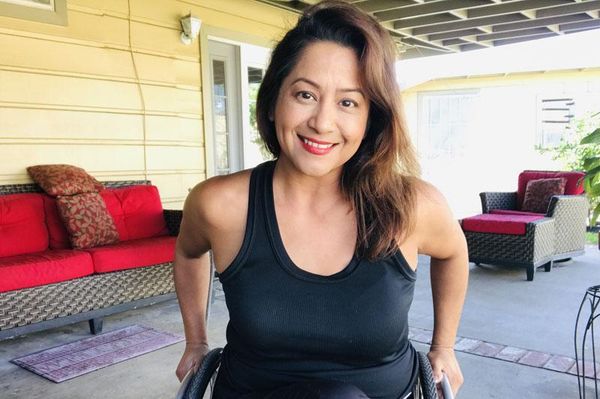By Jenni Grover
Working with an occupational therapist (OT) can yield opportunities for pain relief throughout your life. Elizabeth Gaffron, MOTR/L, LMT, an occupational therapist at the Shirley Ryan AbilityLab Pain Management Center in Chicago, says she defines “occupation” as “anything you do that occupies your time.”
As we experience stress in parts of our life, it can influence our pain, too.
Ashley Uyeshiro Simon, OTD, OTR/L, MSCS, associate professor of clinical occupational therapy at the USC Mrs. T.H. Chan Division of Occupational Science & Occupational Therapy, says, “Physiologically, pain and stress are connected in your body (they share the same nervous system), so treating one component but not the other is really difficult.” Staying open to the interconnectedness of our experience can lead to greater success
Changing our environment starts within
Adapting our approach to common tasks like driving, cooking, getting dressed, or working can give us pain relief—but might also make us feel self-conscious. What will our colleagues think if we use a standing desk or take pacing breaks? What will family members think if we ask for help preparing a holiday meal we used to cook all by ourselves?
Gaffron says our environmental culture can set up performance expectations that lead to feelings of inadequacy. It’s important to give ourselves permission to make changes.
Karen Jacobs, EdD, OT, OTR, CPE, FAOTA is a clinical professor and program director, on-line post-professional doctorate in the occupational therapy (OTD) program at Boston University. She urges patients to start with a daily activity time log, a week-long journal that includes your activities and symptoms. Share it with an OT, and together, you can determine what most needs changing. “Knowing your own body and knowing what the triggers are for chronic pain can help people take more control,” Jacobs says.
The car
“Driving is our freedom, it’s a way of making adjustments to our schedule...it represents a lot for people,” says Gaffron. Both she and Dr. Uyeshiro Simon recommend consulting with an OT who specializes in car ergonomics and understands safety standards. An OT might change your lumbar, neck, and head support; they’ll check the distance of your steering wheel from your torso; they’ll evaluate the angles of your hips and your knees; and more.
Meeting with an OT to evaluate your car helps “establish some good ergonomic opportunities, so you can change it up and still feel safe and be more comfortable,” says Gaffron. “It’s nice to have options!”
Jacobs adds that pacing can also help. Taking breaks, sharing the driving with another person, or arranging to be a passenger are all ways of getting relief. A back-up camera is a great tool, she says, as are heated seats. “If you’re buying a car, check adjustability,” she says. The more adjustable the vehicle, the more opportunities for relief.
The kitchen
Positional tolerance can interfere with doing dishes or preparing meals. Anti-fatigue mats, placed in front of the sink, oven/stove, and counter prep areas, can ease pain. Comfortable shoes that offer support (or insoles) can also help.
Doing prep work at a kitchen table can help but test-drive positions for different tasks and foods. For example, it might be easier to get leverage in a standing position if you’re cutting something hard like squash, but if you’re shelling beans, sitting outside on the porch provides relief and exposure to nature.
Jacobs recommends an automatic jar opener for many patients. A food processor makes prep easier; a stand mixer can provide relief for bakers with wrist pain. “The microwave is one of your best friends,” she says, for high pain days.
Just like driving, kitchen work can be easier on the body if it’s paced into smaller tasks, or shared with others, adds Gaffron.
Working
Whether we’re students, working professionals, or volunteers, we’re likely spending a lot of time at the computer. Finding opportunities to mix sitting or standing, or move to different locations, can relieve postural discomforts and repetitive stress. And pacing techniques (like setting a recurring alarm) can remind us to take breaks.
Bathing and grooming
Dr. Uyeshiro Simon says modifications in the shower can include sitting while bathing, to save energy and increase safety. A long-handled sponge can help wash your back and lower extremities, and a shower caddy keeps your products close at hand.
Jacobs adds that button hooks, long-handled toenail clippers, magnified pill cutters, long-handled shoehorns, and higher toilet seats can all provide some relief. She recommends the Job Accommodation Network for ideas; they list numerous accommodations.
Tools can help, but also: Use what you have
It’s easy to get caught up in buying all the tools in a quest to find the perfect device that relieves pain. Equally important is finding the ideal amount of time for activities and pacing them accordingly. You can invest in an expensive piece of equipment but feel disappointed if you don’t get relief—because you’re still trying to do the activity for hours at a time, with no breaks.
“If you can combine equipment with changes to your habits (like body mechanics, better sleep hygiene, energy conservation, better eating habits), you’ll be optimizing your benefits,” says Dr. Uyeshiro Simon. “It’s all about the little 5% improvements that add up to making a big difference.”
Ready to take action?
Most OTs are only accessible through a doctor referral. To find an OT, look to the nearest comprehensive pain management program, which likely offers occupational therapy.
The American Occupational Therapy Association, Inc. offers numerous resources. Its state association directory can introduce you to local providers.
If you are considering buying tools or assistive devices, make sure you can talk to a representative of the company; understand their return policy; read reviews; and beware of items that overpromise relief. If you can run through options with an OT, even better.







